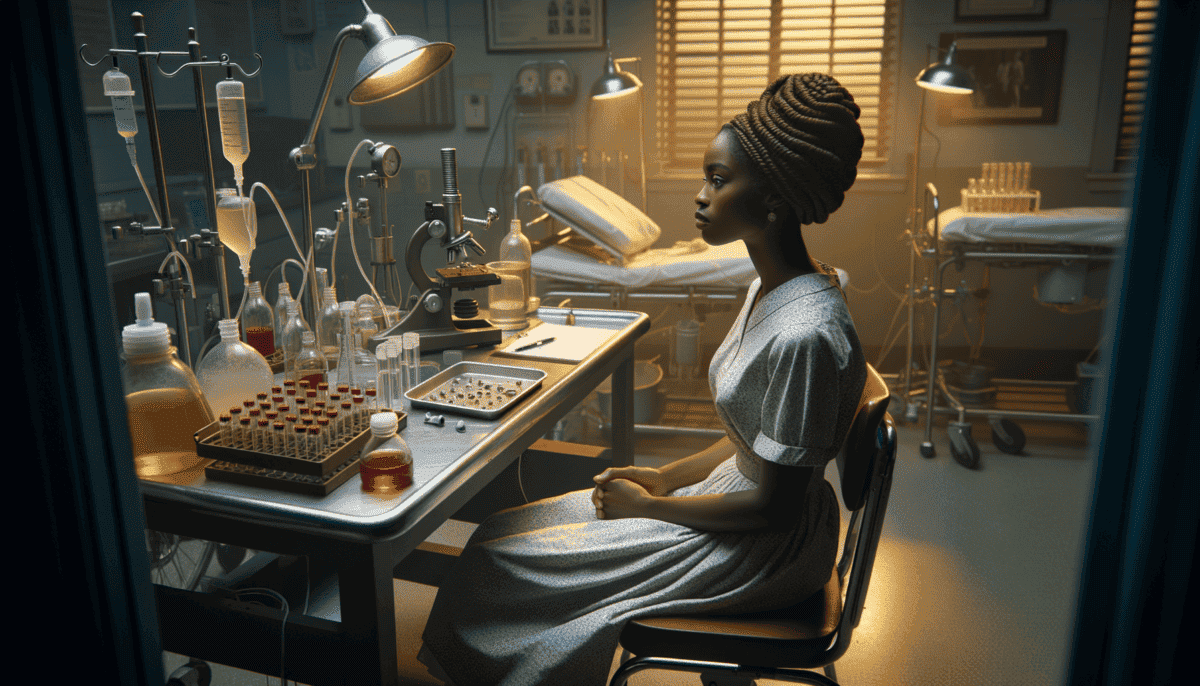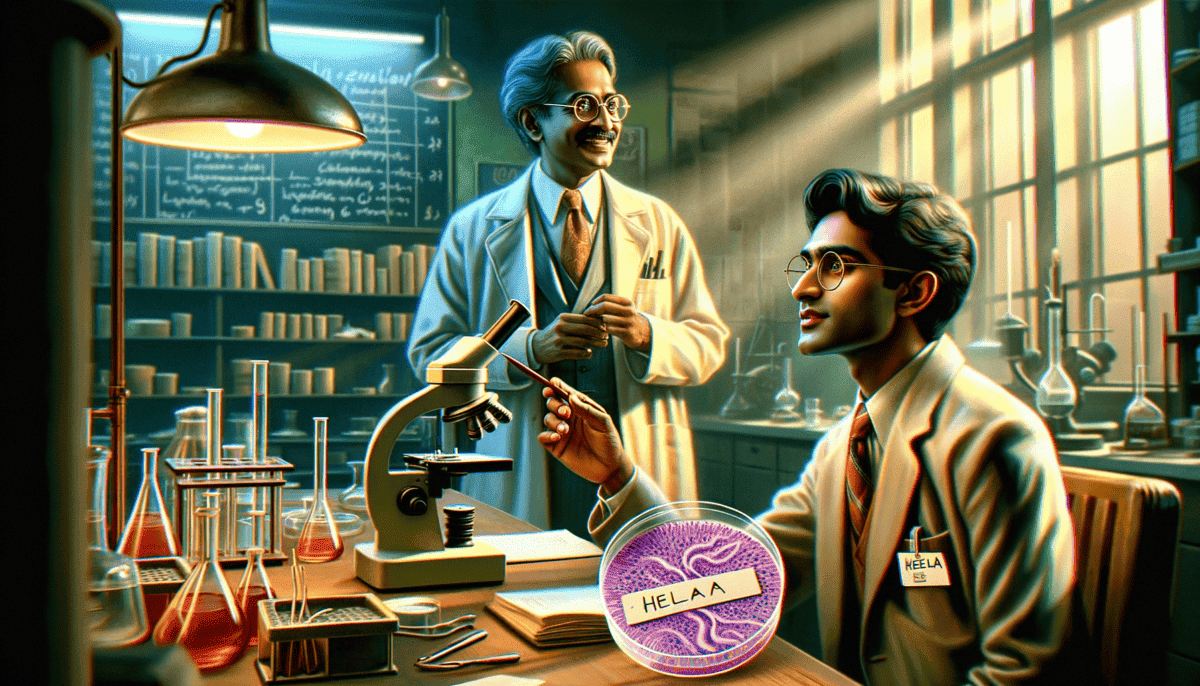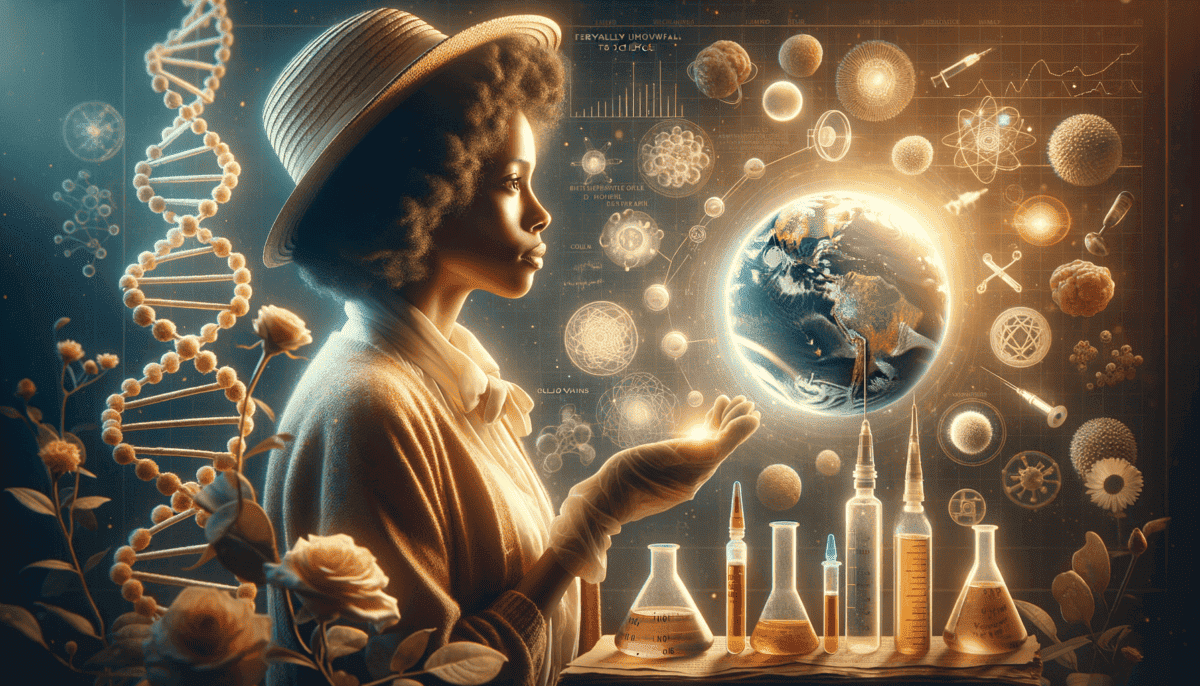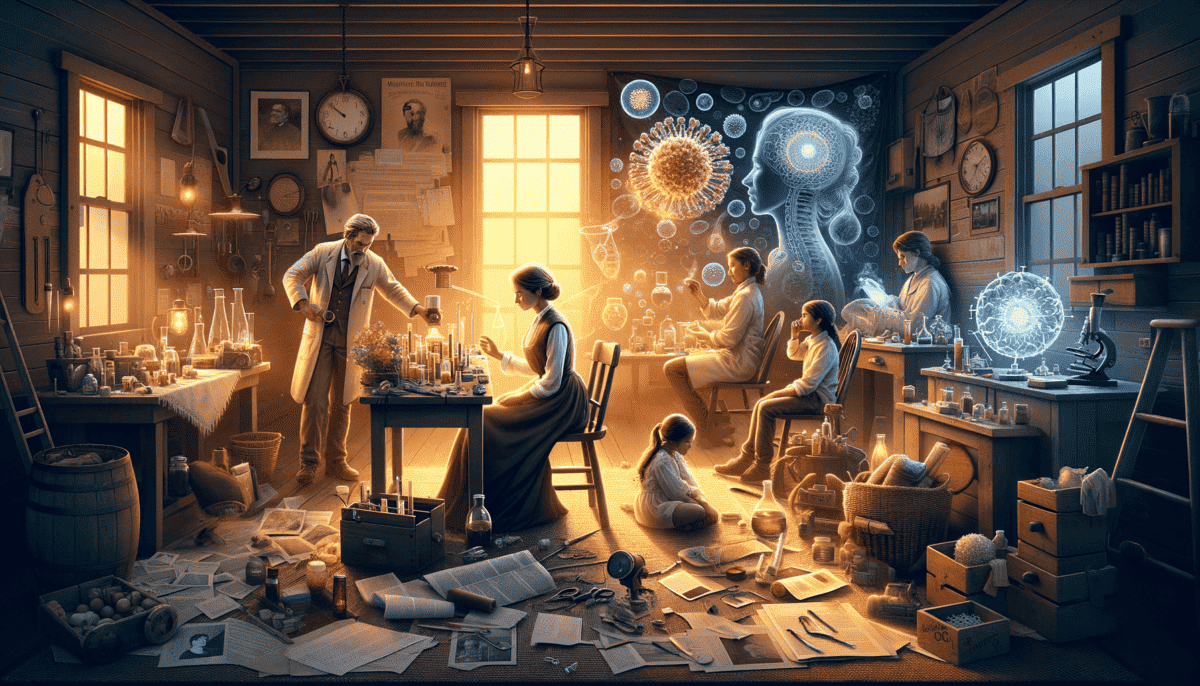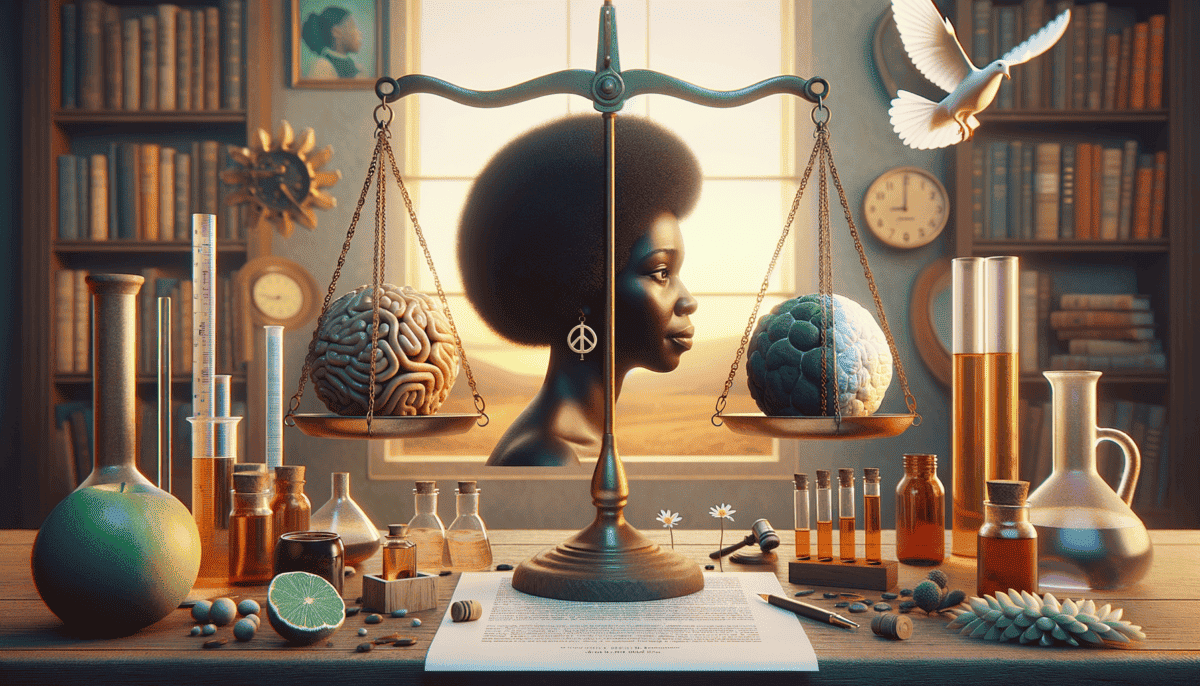A Little Girl with Big Dreams
In a small wooden house in Roanoke, Virginia, a special baby girl was born on August 1, 1920. Her name was Henrietta Pleasant, but everyone called her Hennie.
The morning sun peeked through the windows of her family's tobacco farm as little Hennie grew up. She loved running through the green fields with her cousins, her braided hair bouncing in the warm breeze.
Life wasn't easy for Hennie. She lost her mama when she was just four years old. After that, she went to live with her grandfather and cousin Day in a little house they called "home-house."
"Come help me with these tobacco plants, Hennie!" Day would call out each morning.
Little Hennie would skip outside, ready to help. She was small but strong, and she never complained about the hard work. Even when her hands got tired from picking tobacco leaves, she kept going with a smile.
Growing Up Strong
Henrietta didn't get to go to school much. Back then, many Black children had to work instead of study. But she was smart and learned everything she could from the world around her.
"One day," she told Day while they worked in the fields, "I'm gonna make something of myself."
• Black and white people had separate schools
• Black families often couldn’t go to the same stores as white families
• Many hospitals wouldn’t treat Black patients
• Black children often had to work instead of going to school
When Henrietta was fourteen, she had her first baby. His name was Lawrence. A few years later, she had another baby named Elsie. Even though she was young, Henrietta was a loving mama who worked hard to take care of her children.
A New Chapter
In 1941, Henrietta married her cousin Day. They moved to Turner Station, near Baltimore, Maryland. Day got a good job at the steel mill, and they had three more children: David Jr., Deborah, and Joseph.
Henrietta kept a beautiful garden full of flowers and vegetables. She loved to cook big Sunday dinners for her family and friends. Her sweet potato pie was famous in the neighborhood!
"Miss Henrietta makes the best food in Turner Station!" the neighbors would say.
Strong and hardworking
❤️ Kind and generous
Always helping others
Full of joy and life
Nobody knew it then, but this young mama from Virginia would change the world in ways nobody could imagine. Her story was just beginning, and it would become one of the most important stories in medical history.
Every night, Henrietta would look up at the stars through her window and dream of better days for her children. She didn't know that someday, her name would be known all around the world. She was just being herself – strong, loving, and full of life.
As the sun set over Turner Station, Henrietta tucked her children into bed, not knowing that her greatest contribution to the world was still to come. But that's a story for another chapter…
The Hospital Visit That Changed Everything
One cold January morning in 1951, Henrietta felt something wasn’t right. She put her hand on her tummy and found a lump that felt like a marble.
“Day,” she called to her husband, “I need to see a doctor.”
A Brave Journey
Henrietta took the bus to Johns Hopkins Hospital in Baltimore. The hospital was huge, with tall brick walls and many windows. She walked through long hallways until she found the “colored” ward.
A kind nurse named Emma helped her into a hospital gown. “The doctor will see you soon, Mrs. Lacks,” she said with a gentle smile.
Dr. Howard Jones examined Henrietta. His eyes got big when he saw the purple-ish lump. It was different from anything he had seen before.
The Scary News
“Mrs. Lacks,” Dr. Jones said softly, “you have cervical cancer. We need to start treatment right away.”
Henrietta was scared, but she stayed brave for her family. She thought about her children at home:
• Lawrence (age 16)
• Elsie (age 14)
• David Jr. (age 9)
• Deborah (age 2)
• Baby Joseph (just a few months old)
A Special Moment
During one of her treatments, something amazing happened – though nobody knew it at the time. Dr. George Gey took some of Henrietta’s cells to study them.
This was normal at Johns Hopkins. Doctors often took cells from patients to learn more about diseases. But Henrietta’s cells were different. They were very special.
The doctors took cells that would change medicine forever
These cells would help save millions of lives
✨ But nobody told Henrietta about this
Fighting Through Pain
The treatments were hard. Henrietta had to ride the bus to the hospital many times. Sometimes she was too sick to cook dinner or play with her children.
“Mama’s just tired,” she would tell her worried kids. “I’ll feel better soon.”
Even when she felt awful, Henrietta tried to stay strong. She kept cooking when she could and taking care of her family. Her friend Sadie would come over to help with the children.
“That Henrietta,” Sadie would say, “she never complains. She’s the strongest woman I know.”
Hope and Worry
Back at the hospital, Dr. Gey was getting excited about Henrietta’s cells in his lab. They were growing in ways he had never seen before! But he was too busy to tell Henrietta about this discovery.
Meanwhile, Henrietta kept fighting her illness. She didn’t know that part of her was already helping science in amazing ways. She just wanted to get better and go home to her children.
The doctors kept treating her, and her family kept hoping she would get well. But something incredible was happening in the laboratory downstairs – something that would make Henrietta Lacks one of the most important names in medical history…
A Special Discovery in the Lab
Down in the basement of Johns Hopkins Hospital, Dr. George Gey stared at his microscope. His eyes got big and round.
“Mary! Come look at this!” he called to his lab assistant. “I’ve never seen anything like these cells!”
The Amazing Cells
Most cells from patients died quickly in the lab. But Henrietta’s cells were different. They grew and grew! They doubled every 24 hours.
“Look how strong they are,” Dr. Gey said. “We should give them a special name.” He called them “HeLa” cells, using the first two letters of Henrietta’s first and last name.
Growing and Growing
The HeLa cells did something magical. They:
• Stayed alive for days
• Could be frozen and thawed
• Traveled well in mail packages
• Helped scientists study diseases
Scientists got very excited! They started sharing the cells with other labs. Soon, HeLa cells were traveling all over the world! ✈️
A Big Problem
But there was something wrong. Nobody asked Henrietta if they could share her cells. Nobody told her family what was happening.
“These cells could help cure diseases,” Dr. Gey told other doctors. But he never told Henrietta.
The First Big Test
Dr. Jonas Salk was working hard to stop polio. This was a scary disease that hurt many children. He needed special cells to test his medicine.
“The HeLa cells are perfect!” Dr. Salk said. He used them to make the first polio vaccine.
They grew fast and strong
They helped make new medicines
✨ Scientists could study them easily
More Amazing Uses
Scientists found more ways to use HeLa cells. They helped study:
• Cancer
• AIDS
• The effects of atomic bombs ⚛️
• How cells work
A Growing Secret
The whole world of science was changing because of Henrietta’s cells. But in her hospital room, Henrietta didn’t know any of this. She was still fighting her cancer, thinking about her family, and hoping to get better.
Her cells were traveling to laboratories in Paris, London, and Moscow. Scientists were making big discoveries. But nobody thought to tell the woman who made it all possible.
While doctors celebrated their discoveries, Henrietta’s family was about to face some very hard times. And the amazing story of her cells was just beginning…
Medicine’s Giant Leap Forward
In 1954, something amazing happened in a big laboratory. Scientists were using Henrietta’s special cells to fight a scary disease called polio.
The Big Victory
“It works!” Dr. Jonas Salk jumped up and down. “The vaccine works!” His team had made medicine to stop polio, and Henrietta’s cells helped make it happen.
Traveling Cells
Henrietta’s cells went on amazing journeys. They rode in airplanes to far-away places. Scientists all over the world wanted to study them. ✈️
“Send us more HeLa cells!” scientists would say. “They help us learn about diseases!”
Space Adventure
The HeLa cells even went to space! Scientists wanted to see what would happen to them in zero gravity. These special cells helped us learn how human bodies work in space.
• Make the polio vaccine
• Study cancer better
• Learn about space travel
• Make new medicines
• Understand how cells work
Growing More Important
Every day, scientists found new ways to use Henrietta’s cells. They helped make medicines for:
The flu
Mumps
Measles
Many other sicknesses
A Factory of Hope
Scientists built special places just to grow HeLa cells. These places were like cell factories!
Today’s Heroes
Even now, Henrietta’s cells help fight new diseases. When COVID-19 came, scientists used HeLa cells to learn about the virus and make vaccines.
“These cells are still saving lives,” said Dr. Francis Collins, a famous scientist. “They’re as important today as they were in 1951.”
A Growing Question
But while scientists celebrated each new discovery, something wasn’t right. Henrietta’s family still didn’t know about her cells. They couldn’t afford doctor visits, but their mother’s cells were helping make medicine companies lots of money.
More people started asking: Was this fair? Should someone tell the Lacks family about their mother’s amazing gift to science? The answers to these questions would change how doctors work with patients forever…
A Hidden Truth Comes to Light
The year was 1973. The Lacks family was sitting at their kitchen table when the phone rang.
A Surprising Phone Call
“Hello, is this the Lacks family?” a voice said. “I’m calling about your mother’s cells.”
Lawrence Lacks, Henrietta’s oldest son, held the phone tight. “What about my mother’s cells?”
The Family’s Questions
Deborah, Henrietta’s daughter, started crying. “Why didn’t anyone tell us? Why didn’t we know?”
“Our mother’s cells are helping people everywhere, but we can’t even go to the doctor when we’re sick,” Lawrence said softly.
Two Different Worlds
While scientists got famous and companies made money from HeLa cells, the Lacks family struggled. They couldn’t afford:
• Health insurance
• Good doctors
• Medicine
• Better housing
• Good schools
Looking for Answers
The family started asking questions:
❓ Why did doctors take Mom’s cells without asking?
❓ Who was making money from the cells?
❓ Why didn’t anyone tell us for so long?
A Growing Problem
People started talking about what happened to Henrietta. Many thought it wasn’t fair.
Doctors Start to Listen
Some doctors realized they needed to change how they treated patients. They started making new rules:
✅ Ask patients before taking samples
✅ Tell patients how their samples will be used
✅ Treat everyone fairly, no matter their skin color
The Story Spreads
Reporters started writing about Henrietta’s story. More people learned about the amazing HeLa cells and the family who never knew about them.
“People need to know what happened,” said a young reporter named Rebecca Skloot. “They need to know about Henrietta.”
A Family’s Hope
The Lacks family wanted justice. But more than that, they wanted people to remember Henrietta as a person – not just as HeLa cells in a lab. She was a mother, a wife, and a strong woman who changed medicine forever. ❤️
As more people learned about Henrietta’s story, big changes started happening in how doctors work with patients. But for the Lacks family, there was still more to come…
A Legacy That Changed the World
The sun rose on a special day in Baltimore. People gathered at Johns Hopkins Hospital, but this time it wasn’t for medicine. They came to honor Henrietta Lacks.
A Special Ceremony
“Today, we recognize a woman who helped save millions of lives,” the hospital president announced. A beautiful portrait of Henrietta now hangs in the entrance hall. ️
• Cancer treatments
• The polio vaccine
• Medicines for COVID-19
• Many other important cures
The Family Finds Peace
Deborah touched her mother’s portrait gently. “Now everyone knows who you are, Mama.”
“My mother’s cells helped make medicine better for everyone,” Lawrence said proudly. “That’s something special.”
New Rules for Doctors
Because of Henrietta’s story, doctors made big changes:
✨ They must ask before taking cells
✨ They must tell patients how cells will be used
✨ They must treat everyone fairly
HeLa Cells Today
• Find new medicines
• Study diseases
• Help sick people get better
• Learn about our bodies
The Family’s Victory
In 2013, something important happened. The Lacks family got to help decide how Henrietta’s cells are used.
“Now we have a voice,” said Henrietta’s grandson. “Now we can help make sure Mom-Mom’s cells are used to help people.”
Teaching Future Doctors
Medical schools now teach students about Henrietta. They learn:
To respect all patients
To ask permission
To remember the person behind every sample
Remembering Henrietta
Looking to Tomorrow
Scientists say HeLa cells will keep helping them find new medicines. But now they always remember the brave woman who made it possible.
Today, students learn about Henrietta in school. Books tell her story. Museums have special exhibits about her life. Her name will never be forgotten again.
Henrietta Lacks didn’t know her cells would change medicine forever. But they did. And now the whole world knows her name and remembers her story. She shows us that one person can make a difference that lasts forever. ✨


